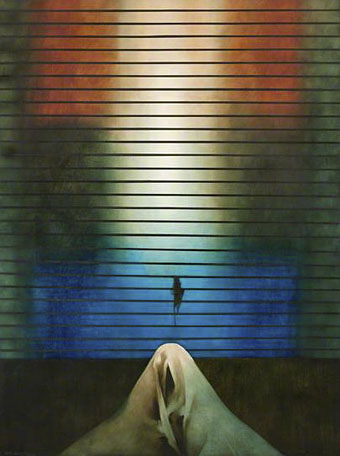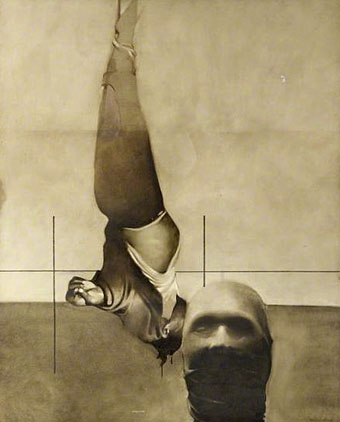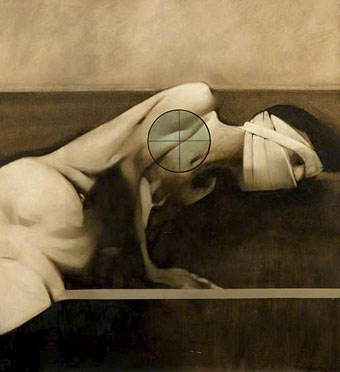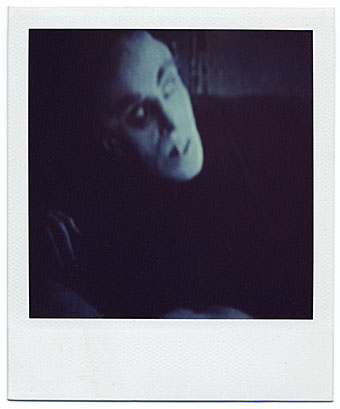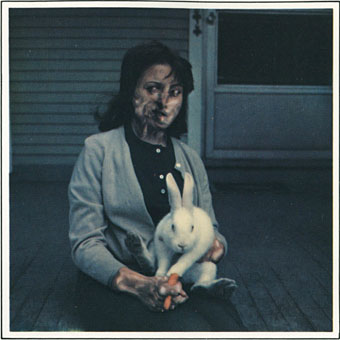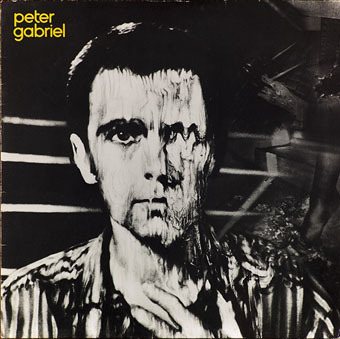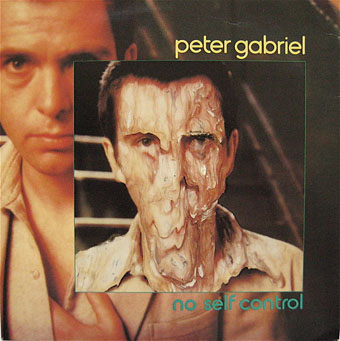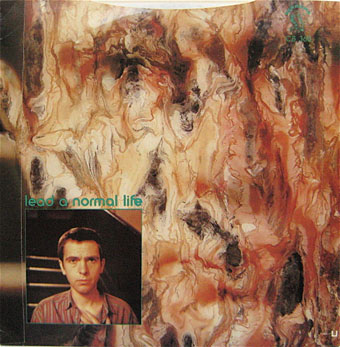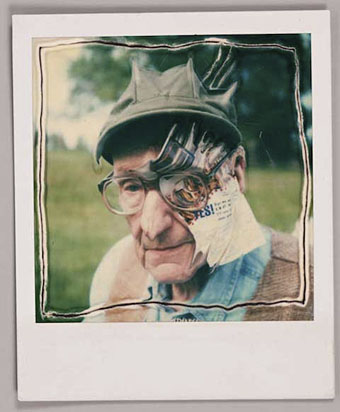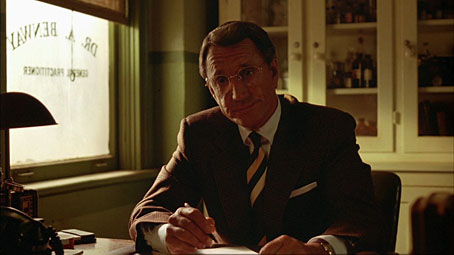
Roy Scheider as Dr A. Benway in Naked Lunch (1991).
1: Naked Lunch (1959) by William Burroughs
So I am assigned to engage the services of Doctor Benway for Islam Inc.
Dr. Benway had been called in as advisor to the Freeland Republic, a place given over to free love and continual bathing. The citizens are well adjusted, cooperative, honest, tolerant and above all clean. But the invoking of Benway indicates all is not well behind that hygienic facade: Benway is a manipulator and coordinator of symbol systems, an expert on all phases of interrogation, brainwashing and control. I have not seen Benway since his precipitate departure from Annexia, where his assignment had been T.D.—Total Demoralization. Benway’s first act was to abolish concentration camps, mass arrest and, except under certain limited and special circumstances, the use of torture.
“I deplore brutality,” he said. “It’s not efficient. On the other hand, prolonged mistreatment, short of physical violence, gives rise, when skillfully applied, to anxiety and a feeling of special guilt. A few rules or rather guiding principles are to be borne in mind. The subject must not realize that the mistreatment is a deliberate attack of an anti-human enemy on his personal identity. He must be made to feel that he deserves any treatment he receives because there is something (never specified) horribly wrong with him. The naked need of the control addicts must be decently covered by an arbitrary and intricate bureaucracy so that the subject cannot contact his enemy direct.”
2: Doctor Benway Operates (1983)
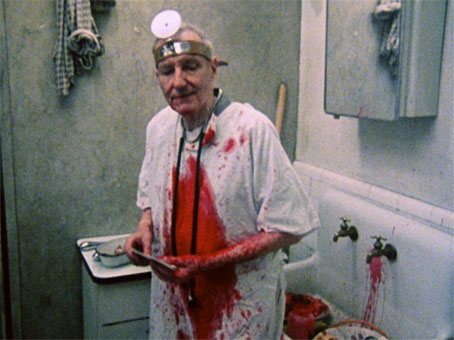
A short sequence from Howard Brookner’s Burroughs: The Movie. Burroughs himself takes the role of the notorious doctor in a staging of the operation scene from Naked Lunch.
3: Repo Man (1984)
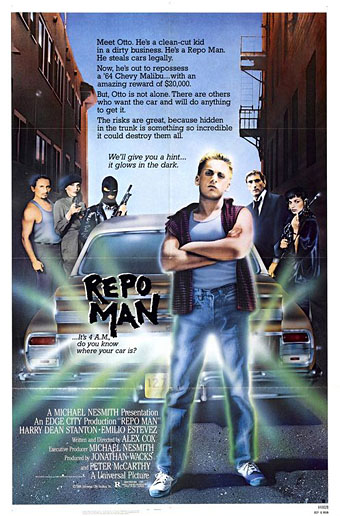
Alex Cox’s feature film includes a hospital scene in which a Doctor Benway and a Mr Lee are paged over the PA. As I recall, Mr Lee is requested to “return the drugs”. There’s apparently a similar scene in Dark City (1998) but if so this must be in the director’s cut which I’ve yet to see.
4: Nomads (1986)
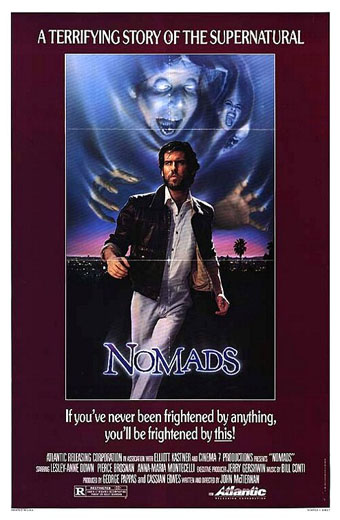
I’ve not seen John McTiernan’s thriller but it contains another instance of a Doctor Benway being paged at a hospital. (Thanks, Márcio!)
5: Naked Lunch (1991)
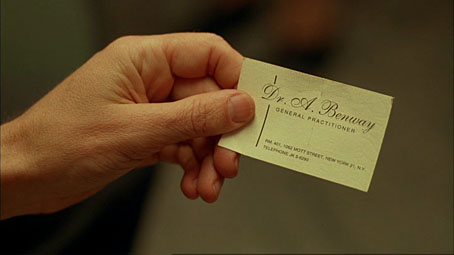
David Cronenberg’s film shows the address of Benway’s surgery to be in Mott Street, New York. This happens to be in the Chinatown area of the city, and is also the location of the Genco Olive Oil Company in The Godfather: Part II.
6: Love is the Devil (1998)
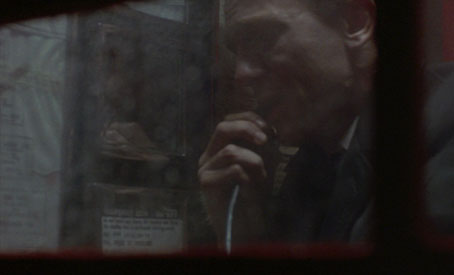
John Maybury’s Francis Bacon bio-pic features an early screen appearance by Daniel Craig as Bacon’s doomed lover, George Dyer. The latter’s descent into drug-fuelled self hatred includes this scene in a dimly-lit phonebox where Dyer calls up a “Dr. Benway” to request another angry fix. The BFI subtitles give the name as “Banway” but the reference is hardly accidental, especially when Bacon and Burroughs were friends.
7: Standards (2001) by Tortoise
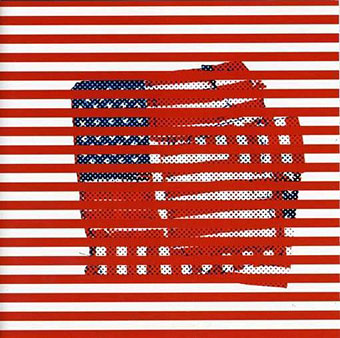
Track 4: Benway.
8: Autopsy (2008)
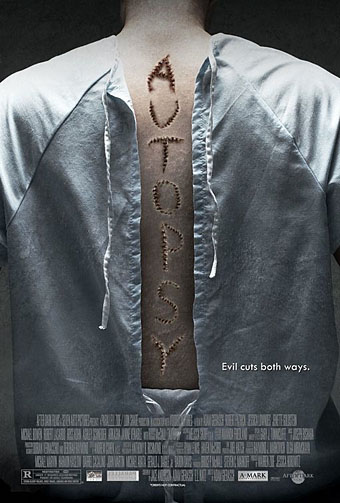
Adam Gierasch’s horror film has Robert Patrick playing a Doctor Benway. With a title like that it seems almost inevitable.
9: Beyond the Black Rainbow (2010)
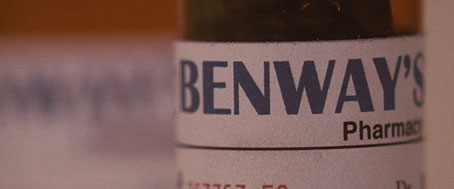
Near the beginning of Panos Cosmatos’s feature film Barry Nyle (Michael Rogers) is seen consuming a quantity of unspecified pills. A brief shot shows the origin of the drugs. Some of the experiments taking place in the Arboria Institute where Nyle works aren’t far removed from either Cronenberg’s or Burroughs’ fictions.
Elsewhere on { feuilleton }
• The William Burroughs archive

